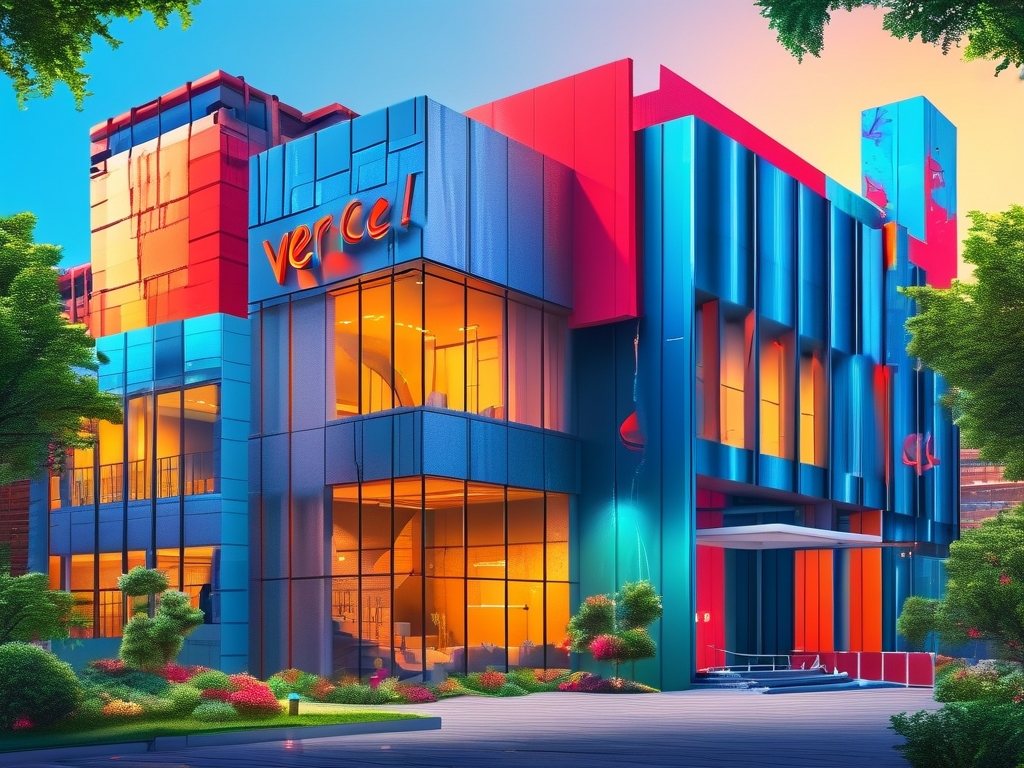In the fast-paced world of web development, efficiency and speed are paramount. Developers constantly seek tools that streamline workflows, reduce manual intervention, and ensure seamless delivery of applications. Enter Vercel, a platform that has redefined deployment workflows through its robust automation capabilities. This article explores how Vercel’s automated deployment features empower developers to focus on building exceptional user experiences while eliminating the complexities of traditional deployment processes.

What Is Vercel?
Vercel is a cloud platform designed for frontend developers, offering hosting, serverless functions, and edge networking for modern web applications. Best known for its integration with Next.js, Vercel simplifies deploying static sites, hybrid applications, and dynamic web projects. Its core strength lies in its developer-centric approach, providing tools that automate repetitive tasks, optimize performance, and scale applications effortlessly.
The Rise of Automated Deployment
Automated deployment is no longer a luxury—it’s a necessity. Manual deployment processes are error-prone, time-consuming, and hinder collaboration in team environments. Automation ensures consistency, reduces human error, and accelerates release cycles. For DevOps teams, automation bridges the gap between development and production, enabling continuous integration and continuous deployment (CI/CD).
Vercel’s automation tools are purpose-built for this era. By integrating directly with Git repositories (GitHub, GitLab, Bitbucket), Vercel triggers deployments automatically whenever code changes are pushed. This eliminates the need for manual builds or complex configuration scripts.
Key Automation Features of Vercel
-
Git Integration and Instant Deploys
Vercel’s seamless Git integration is a game-changer. Connect your repository, and Vercel deploys every commit to a unique URL, providing instant previews for every branch and pull request. This allows teams to test changes in isolation before merging them into production. -
Preview Environments
Every pull request generates a live preview environment, complete with its own URL. Stakeholders can review design tweaks, functionality, or bug fixes in real time, fostering collaboration and reducing feedback loops. -
Automatic Builds and Caching
Vercel detects framework-specific configurations (Next.js, Gatsby, Nuxt, etc.) and optimizes builds automatically. Advanced caching mechanisms ensure subsequent deployments are faster, saving time and computational resources. -
Serverless Functions and Edge Middleware
Vercel automates serverless backend deployment. Developers write functions in JavaScript/TypeScript, and Vercel handles scaling, routing, and global distribution. Edge Middleware allows lightweight logic to run at the network edge, enabling personalization and A/B testing without redeploying the entire app. -
Custom Domains and HTTPS
Vercel automates SSL certificate provisioning and domain configuration. Assigning a custom domain takes minutes, with HTTPS enabled by default for security. -
Environment Variables and Secrets Management
Securely store API keys and environment-specific configurations within Vercel’s dashboard. These variables are injected automatically during builds, keeping sensitive data out of version control.
Real-World Use Cases
- Startups and MVPs: For small teams, Vercel’s automation accelerates time-to-market. Developers iterate quickly, deploying updates multiple times a day without operational overhead.
- Enterprise Teams: Large organizations benefit from preview environments and role-based access controls, ensuring smooth collaboration across departments.
- Open-Source Projects: Maintainers can automate deployments for documentation sites or demos, ensuring contributors’ changes are instantly visible.
Beyond Deployment: Performance Optimization
Vercel’s automation extends to performance. It leverages global CDNs to serve static assets from edge locations, reducing latency. Automatic image optimization, code splitting, and lazy loading further enhance user experiences. For dynamic content, Incremental Static Regeneration (ISR) allows pages to update in the background without full rebuilds.
The Cost of Automation (or Lack Thereof)
Vercel’s free tier supports hobby projects, while paid plans scale with usage. Compared to managing servers or configuring CI/CD pipelines from scratch, Vercel’s pricing is competitive. The time saved on deployment and maintenance often outweighs costs, especially for teams prioritizing agility.
Challenges and Considerations
While Vercel excels in frontend deployment, complex backend systems might require additional tools (e.g., Docker, Kubernetes). Developers must also adhere to platform limits, such as serverless function execution durations. However, Vercel’s flexibility allows integration with external services when needed.

Vercel’s automated deployment tools represent a paradigm shift in web development. By abstracting infrastructure complexities, developers reclaim time to focus on innovation. Whether you’re a solo developer or part of a global team, Vercel’s automation ensures your applications are always fast, secure, and up-to-date. As the web evolves, platforms like Vercel will continue to define the future of developer workflows—one automated deployment at a time.









